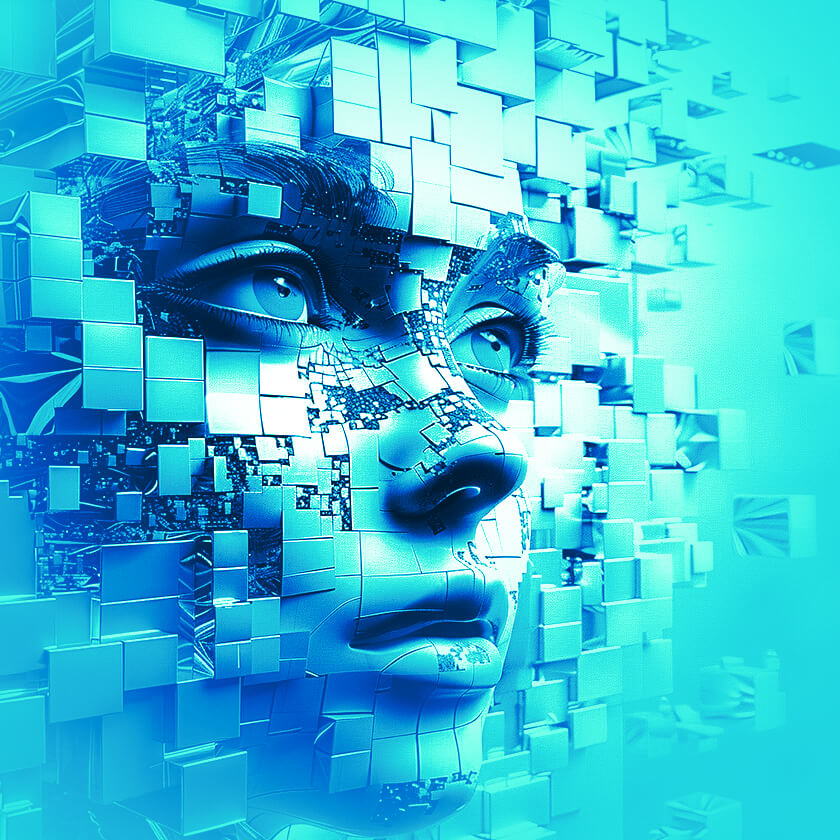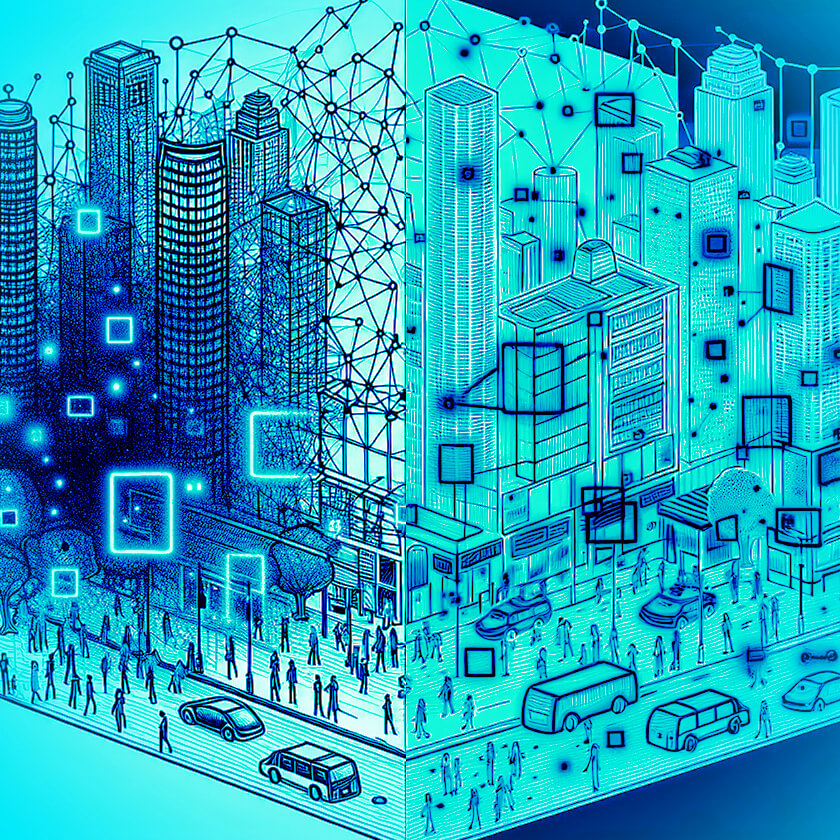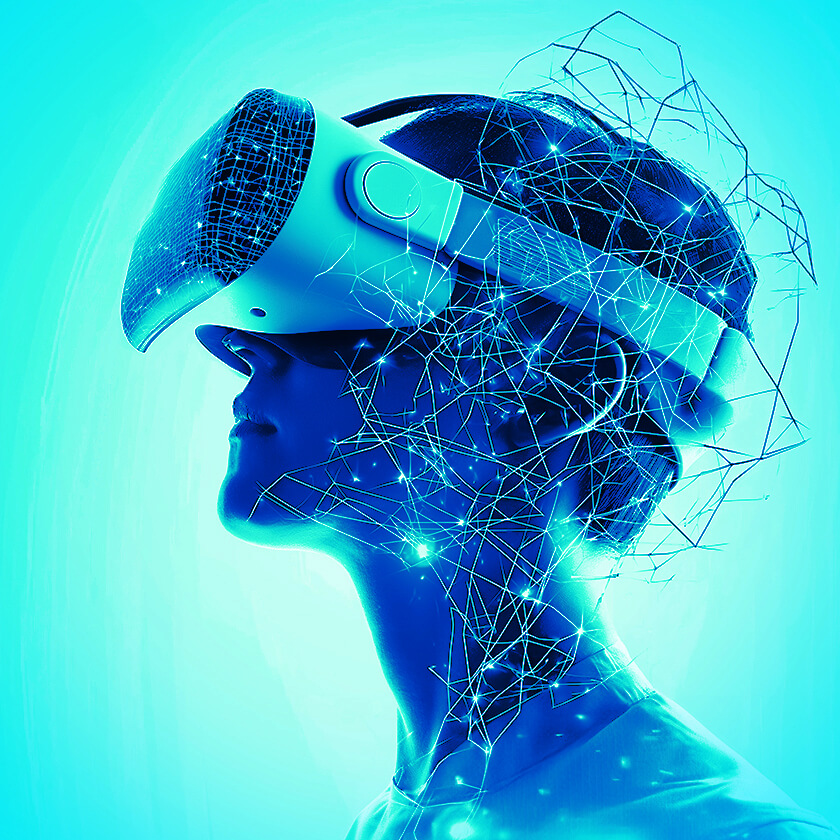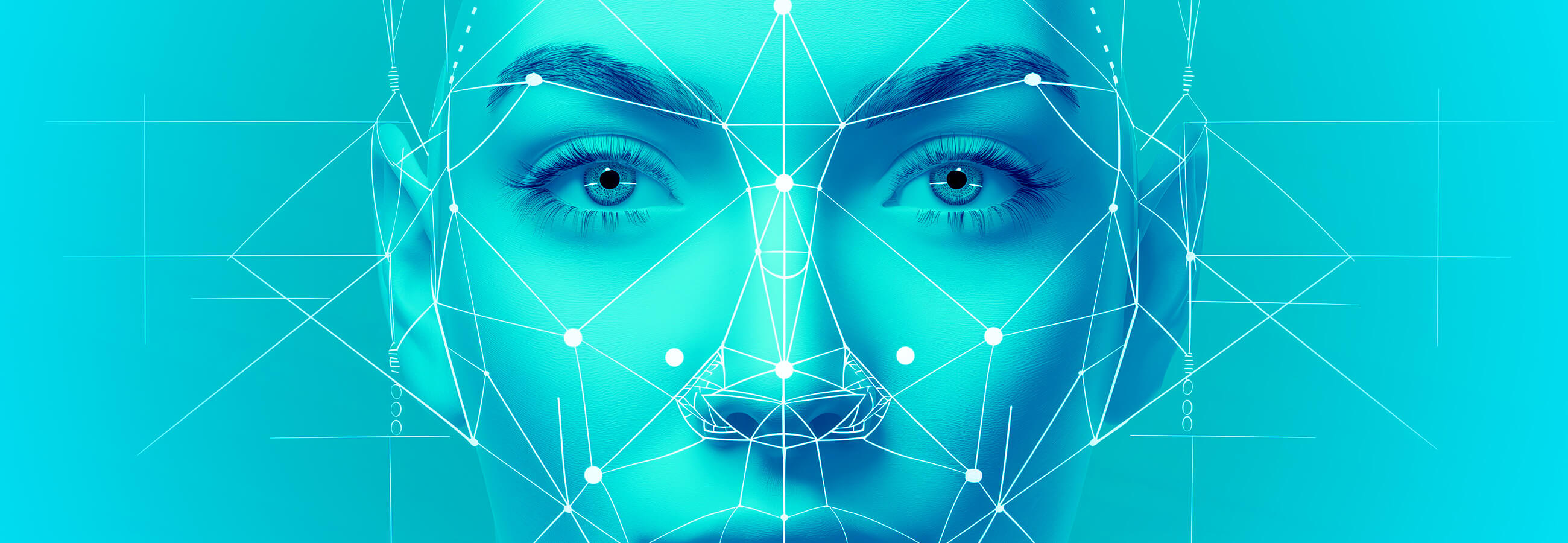What is image recognition? Simply put, it’s a technology that enables computers to interpret and process visual information much like humans do. This guide will explore how image recognition identifies objects, its crucial role in diverse industries, and what the future holds for this dynamic field.
Table of Сontents
- Key Takeaways
- Defining Image Recognition
- The Science Behind Image Recognition
- Popular Image Recognition Algorithms
- Applications of an Image Recognition System
- Comparing Image Recognition and Object Detection
- Challenges and Limitations of Image Recognition systems
- The Future of Image Recognition
- Summary
- Frequently Asked Questions
Key Takeaways
- Image recognition utilizes artificial intelligence and machine learning to identify objects or features in images and videos, with applications across various industries like healthcare, retail, and agriculture.
- Key components of image recognition models include data collection, preparation, annotation, and the machine learning workflow, with Convolutional Neural Networks (CNNs) as the leading algorithm for handling complex tasks.
- Despite its transformative impact, image recognition faces challenges such as privacy concerns, the necessity of quality training data, computational demands, and potential algorithm biases, which are being addressed through advancements like edge AI and custom models.
Defining Image Recognition

Imagine walking into a room and instantly identifying objects around you. That’s precisely what image recognition does, but in the digital realm. So, what exactly is this technology? Image recognition is the process of identifying objects, places, people, writing, and actions in digital images.
This process is achieved using artificial intelligence and machine learning, which allow the system to learn from data and make predictions or decisions without being explicitly programmed to perform the task.
As a sub-category of computer vision technology, image recognition is all about recognizing patterns and regularities in image data. It involves the software’s ability to “see” and interpret the content of a digital image, much like the human eye would.
However, unlike human vision, which is innate, image recognition systems have to be trained to recognize different objects in an image, and this is where image recognition software comes into play.
Key Components of Image Recognition
Now that we have a basic understanding of what the technology is, let’s delve into its key components.
- Data collection. This is the first step in the image recognition process, where a diverse range of images representing the objects, scenes, or patterns to be recognized by the system are sourced. This data forms the foundation for the image recognition model.
- Data preparation. Next, the collected data is prepared and refined, a process that may involve tasks like removing inconsistencies and normalizing pixel values to make it suitable for training the model.
- Data annotation. During this stage, objects within images are labeled to aid the computer vision system in detecting them. These annotated images are then used to train the model to recognize similar objects in subsequent images supplied to it.
- The machine learning workflowThe final step in the image recognition process is the actual machine learning workflow. This includes compiling categorized images, feature extraction, and creating a model that classifies features to recognize new objects.
Deep learning workflows, a subset of machine learning workflows, involve training a model with prepared data and evaluating its performance with new, unseen data. The Deep Learning Toolbox™ in MATLAB offers a framework for designing deep neural networks, which includes algorithms, pretrained models, and applications specific to image recognition.
The Science Behind Image Recognition

Peeling back the layers of image recognition takes us into the realm of computer vision and artificial intelligence.
Computer vision is a field that allows computers to derive meaningful information from digital images, videos, and other visual inputs. Image recognition is a specific task within this field focused on identifying objects, features, or patterns in images.
An essential component of the technology is image sensors, which capture a wide array of features such as intensity and amplitude. These features are subsequently processed to identify specific information within the images. The process of image recognition involves:
- Creating a Convolutional Neural Network (CNN) architecture
- Learning from sample images
- Applying this learned knowledge to new and unseen images during the recognition process.
Training effective image recognition system requires large datasets of labeled images, where the machine learning algorithms can learn to detect and classify different features and objects within the images. Despite the power of deep learning for image recognition, there is still a significant need for extensive and diverse data to ensure robust and generalizable models.
Deep Learning and Neural Networks
Deep learning, a subset of machine learning involving artificial neural networks, is instrumental in learning from large datasets for image recognition. Inspired by the human brain, neural networks are essential for image recognition, and their design enables the direct learning of features from data.
Through the training process, an artificial neural network acts like a filter, correlating input images to the correct output labels. Deep neural networks with multiple layers have enhanced predictive power for image recognition tasks by harnessing the ability to learn any mapping function.
When it comes to image recognition, Convolutional Neural Networks (CNNs) are the gold standard. Their streamlined architecture allows deployment on diverse devices and is particularly efficient in learning spatial hierarchies of image features due to their parameter sharing technique.
For complex problems, deep learning techniques are crucial as they automatically discover the most significant features for the images.
Supervised, Unsupervised, and Self-Supervised Learning
There are three types of learning approaches used in image recognition systems: supervised learning, unsupervised learning, and self-supervised learning. Each of these learning approaches plays a unique role in training image recognition models.
In supervised learning, models are trained on annotated datasets, where each image is labeled with a category, leading to high-accuracy recognition of the visual characteristics attributed to each class. Unsupervised learning, on the other hand, does not rely on labeled data. Instead, it uses algorithms to identify inherent patterns within the data, often through clustering techniques.
Self-supervised learning, a subset of unsupervised learning, involves training systems with a secondary task that provides automatically generated labels. This promotes understanding of complex semantic features in the images and enables the model to learn more effectively.
Popular Image Recognition Algorithms

When it comes to actual algorithms, several image recognition techniques stand out due to their effectiveness and widespread usage. These include Convolutional Neural Networks (CNNs), Support Vector Machines (SVMs), and Histogram of Oriented Gradients (HOG).
CNNs are the leading architecture in image recognition. Known for layers that capture partial aspects of an image and piecing together an overarching representation, they have revolutionized the field of image recognition. On the other hand, Support Vector Machines (SVMs) are supervised learning models that classify images by finding the optimal separating hyperplane and maximizing the margin between distinct classes.
The Histogram of Oriented Gradients (HOG) is used in object detection and recognition by summarizing the direction of gradients and edge orientations within localized portions of an image. The choice of algorithm largely depends on the specific task at hand and the nature of the images being processed.
Applications of an Image Recognition System

Image recognition applications are as diverse as they are transformative. From retail to healthcare, the technology is being harnessed to drive innovation and create efficiencies. In retail events, for instance, it is utilized for:
- Shelf monitoring.
- Product identification.
- Fraud detection.
- Personalized marketing.
Moreover, It spans across diverse applications including retail analysis, media content analysis, quality control in manufacturing, etc.
Retail and E-commerce
Stepping into the world of retail and e-commerce, image recognition is making waves. Retailers use it to:
- Monitor shelf layout
- Analyze customer behaviors
- Enable personalized shopping experiences
- Provide personalized product recommendations
- Manage real-time inventory
Image recognition can accurately identify products both on the shelf and when they are out-of-stock. It analyzes data in real-time, providing detailed insights broken down by SKU, outlets, and merchandisers. This enables proactive decision-making and ensures optimal product availability and placement, ultimately enhancing operational efficiency and customer satisfaction.
For instance, a merchandising agency reduced reporting time in a store by 70%, allowing merchandisers to visit more outlets or conduct additional checks.
As the retail landscape grows increasingly competitive, image recognition emerges as a key differentiator. Retailers who can effectively harness this technology stand to gain a significant advantage in terms of customer engagement and loyalty.
Healthcare and Medical Imaging
In the healthcare sector, image recognition proves to be a game-changer. It’s instrumental in detecting conditions such as:
- bone fractures
- brain strokes
- tumors
- lung cancers
Through medical image analysis, like the examination of X-rays and scans, image recognition helps in identifying progressions of tumors, viruses, and abnormalities in veins or arteries.
Computers leverage image recognition to understand images in the medical industry, crucial for tumor monitoring and the detection of scan abnormalities. Thanks to image recognition, healthcare professionals can now diagnose diseases more accurately and in their early stages, leading to better patient outcomes.
The healthcare sector is progressively embracing image recognition technologies. By using AI to interpret medical imagery more rapidly for diagnosis and treatment planning, and providing support to visually impaired individuals, we are witnessing a new era of healthcare innovation.
Security and Surveillance
In the realm of security and surveillance, image recognition is making its presence felt. Facial recognition is used for identifying unauthorized individuals accessing personal information and securing airport premises by verifying individuals’ identities. This not only enhances security but also streamlines the identification process, saving both time and resources.
Image recognition also aids traffic police in detecting violations such as the use of mobile phones while driving, seat belt compliance, and speeding infractions. While challenges like poor lighting conditions can impact recognition accuracy, image normalization techniques are utilized to overcome these challenges.
Advancements in image recognition are expected to lead to more prevalent real-time applications in security systems, enhancing instantaneous response capabilities. As the technology matures, we can expect to see even more sophisticated applications of image recognition in security and surveillance.
Comparing Image Recognition and Object Detection

While often used interchangeably, image recognition and object detection are two distinct concepts. Image recognition focuses on assigning a classification label to an image, identifying what is depicted as a whole, whereas object detection goes further by also locating objects within the image using bounding boxes.
Object recognition algorithms can manage multiple classes and instances of objects in an image, compared to image recognition which generally determines the main object or scene. This makes object detection more suitable for complex tasks where multiple objects need to be identified and their locations determined.
Understanding the differences between image recognition and object detection is crucial for choosing the right approach for a given task. While image recognition models are trained to connect images with their overarching descriptions, object detection models are tailored to distinguish objects and specify their locations.
Computer Vision in FMCG: Hype or a Real Advantage?
Market Overview, Objectives, Projects
and Implementation Stages
Challenges and Limitations of Image Recognition systems

Despite its many advantages, image recognition is not without its challenges. Some of the challenges include:
- Privacy and security issues, particularly when using APIs for image recognition, which can lead to potential risks.
- The need for high-quality and well-labeled training data to ensure accurate recognition.
- The computational power required for processing large amounts of image data.
- The potential bias and discrimination that can occur in image recognition process.
To address these challenges, edge AI, which doesn’t require uploading images to the cloud, is preferred for confidential image processing.
Custom image recognition models are often needed to improve performance on images that significantly differ from standard datasets or provide solutions for new applications where existing models do not offer the necessary accuracy. Furthermore, cloud-based computer vision APIs face challenges such as high costs, connectivity and bandwidth issues, data volume, robustness, and latency.
Understanding these challenges is crucial for the effective application of image recognition. As technology advances, strategies to address these challenges are being developed, paving the way for more robust and secure image recognition applications.
The Future of Image Recognition

The future of image recognition is as exciting as it is transformative. Advanced image recognition algorithms will vastly improve through the use of:
- Deep learning for better object detection and classification.
- Neuromorphic chip technology for faster processing with lower power consumption.
- Quantum computing for handling massive datasets.
- Generative adversarial networks for creating enhanced synthetic training datasets.
The future of image recognition technology includes:
- Greater synergy with AI, evidenced by increased collaborative AI efforts.
- The security benefits of blockchain integration for digital asset verification.
- The accessibility and scalability afforded by cloud-based solutions.
These advancements promise to make image recognition even more powerful and versatile.
Image recognition is set to play an even bigger role in emerging and existing industries. From autonomous driving in the automotive industry to immersive experiences being enhanced by AR and VR, each leveraging real-time environmental analysis and interactive capabilities, the future of image recognition holds many exciting possibilities.
Summary

As we’ve journeyed through the fascinating world of image recognition, we’ve seen how this powerful technology is driving innovation across industries, transforming the way we live and work.
With advancements in deep learning, AI, and cloud technology, the future of image recognition holds limitless potential. As we look forward to this future, one thing is certain: image recognition is set to continue playing a transformative role in our digital world.
Frequently Asked Questions
Image recognition is the process of identifying objects, people, text, and actions within digital images using artificial intelligence and machine learning. It is a subfield of computer vision focused on detecting patterns and objects in visual data.
Image recognition primarily relies on convolutional neural networks (CNNs) to automatically learn and extract features from images through layers of convolution, pooling, and fully connected operations.
Image recognition is used by FMCG companies for shelf monitoring or behavior analysis, security systems for facial recognition and in medical diagnosis to help healthcare professionals examine medical imaging for disease diagnosis.
Future developments include:
- Edge AI — processing data on devices to reduce latency and improve privacy.
- Specialized models — creating models tailored for specific tasks and industries.
- Improved algorithms — enhancing accuracy and reducing bias in recognition systems.
The key components of image recognition are data collection, data preparation, data annotation, and the machine learning workflow. These are essential for developing accurate models.




